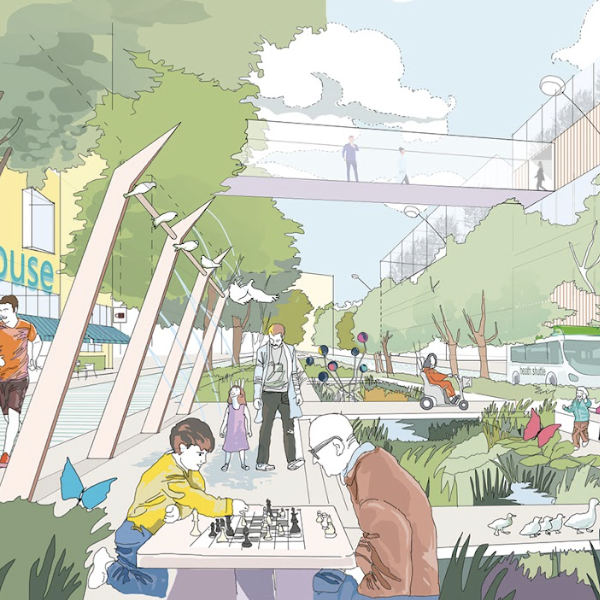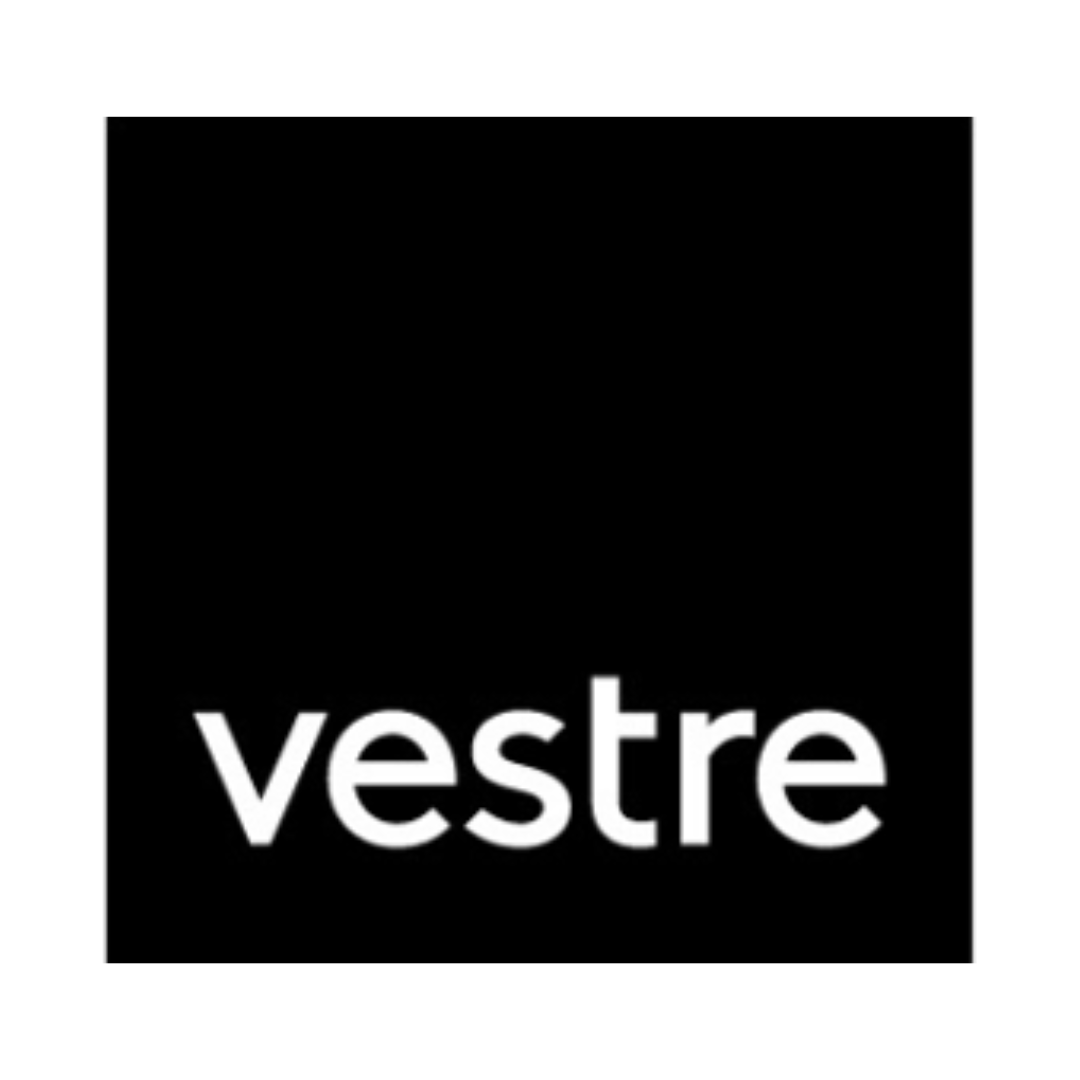Project showcase
Heath Park Masterplan, Runcorn - SOG Group with EcoResponsive Environments

Where is the project located
Heath Road South, Weston, Runcorn WA7 4QX
Who is the developer/client of the project?
SOG Group
Who is on the project team?
Lead Consultant (architectural and urban designers) - EcoResponsive EnvironmentsLandscape - Peter Neal Consulting ; Transport - Active Planning ; Commercial Viability - BNP Paribas ; Natural Capital Accounting -Liverpool John Moores University, Mersey Forest ; Social Value and GRESB Assessment - Greengage Environmental ; Structural Engineers - London Structures Lab ; Environmental design and sustainable nfrastructure - Studio 4215 ; M&E - Integration, Adrian James ; Sustainable water strategy - Expedition Engineering ;
Describe the context of this project, its neighbourhood and people?
This project regenerates, diversifies and expands the 57-acre Heath Business and Technical Park in Runcorn, near Liverpool. Built as headquarters for chemical giant ICI, Heath Park’s operations were scheduled for closure, with the loss of 1,600 jobs, in 2000. This was widely seen as Runcorn’s death knell: ICI was Runcorn’s biggest employer, providing vital resources for other businesses across the region.
Fighting back, former ICI employees created the SOG Group with local entrepreneur John Lewis. SOG purchased the buildings (research and development laboratories, offices and corporate facilities) and transformed them from a single-occupancy corporate site into a regional asset: now one of Britain’s leading and award-winning business and technical parks, currently housing some 120 scientific research and development businesses. In parallel, the Park’s corporate facilities – café, conference centre and leisure centre - were progressively opened for local people’s use.
Building on these successes, SOG launched a RIBA ideas competition seeking reimagined visions of Heath Park as a beacon, casting light on ways to address the issues of mental and physical health and wellbeing that underlie Runcorn’s problematic deprivation index. The winning entry, by EcoResponsive Environments, explored ways of channelling the economic potential generated by the area’s excellent national and international transport infrastructure and green environment, to create a mixed-use neighbourhood supported by job opportunities, education, training and housing in nature-rich settings. The subsequent feasibility study described here is now recognised as one of 35 ‘Green Innovation’ projects showcased to top international investors in the UK’s 2021 Global Investment Summit.
Please describe your approach to this future place and its mix of uses. How will it function as a vibrant place? How does it knit into, and serve the needs of, the wider area?
A vibrant place - a place to live, work and play - requires safe public space, accessing the widest possible choice of activities that people want, in a green environment that maximises ‘natural health services’. Achieving this in practice depends on mutually-beneficial interrelationships between public space, buildings and landscape so that the whole becomes more than the sum of its parts. At Heath Park, landscape permeates highly connected networks of public space which support active travel, which in turn maximises footfall and supports the widest variety of viable activities, housed in buildings that front public space to maximise conviviality.
The needs of the wider area were established through engagement with Liverpool City Region Combined Authorities, Liverpool Enterprise Partnership, Halton Borough, Local Ward Councillors and, in relation to landscape, with Mersey Forest. More locally, an interactive ‘Heath Live’ website engaged with local residents and businesses throughout lockdown periods: an important lifeline informing about emerging design ideas.
Informed by this engagement, the masterplan includes 616 homes including policy-compliant affordable housing, 235,000 sqft of offices, 17,000 sqft of conference centre, 61,000 sqft of local amenities, 8,000 sqft of affordable artists’ studios and a 5,000 sqft Vertical Farm. The residential mix ranges from one-bed flats to five-bed houses, senior living accommodation and 20-bed extra-care facility. New and repurposed buildings form fine-grained mixed-use perimeter blocks; each with mixed tenures and frequent street entrances, with resident-access communal gardens fostering social integration and intergenerational living. Phasing enables existing businesses to continue operating throughout the construction process.
What is the environmental impact of the project? How will the carbon use and material impact of the development be mitigated? What is the sustainability strategy?
Heath Park’s holistic sustainability strategy based on 8 principles spans three interconnected scales: site-wide, cluster-scale and individual buildings, responding to climate crisis and environmental degradation. Together they enable Heath Park’s people to live, work and play towards a net-zero future. Proposals’ target GRESB-Excellent accreditation.
Addressing the climate crisis, Heath Park forms a Low Traffic Neighbourhood; with highly-connected landscape-integrated streets for healthful walking, cycling and play. Filtered permeability for private cars, with electric car club, bike hire schemes and increased frequency of public transport, work towards Liverpool City Region’s 2030 Net-Zero Carbon target.
In site-wide response to environmental degradation, a ‘living machine’ constructed wetland recycles grey and black water; supporting highly-connected biodiverse green networks, linked into the regional Mersey Forest, with 500m pollinator-rich wildflower meadow-ride. Liverpool John Moores University’s Natural Capital Accounting assesses the masterplan as net-positive in terms of seven ecosystem service indicators.
At cluster-scale, regenerative microgrids of energy, water and waste maximise energy-efficiency and resource-sharing amongst diverse uses. Vertical Farm, communal allotments and local composting power Runcorn’s local food revolution.
At building scale, Heath Park’s ‘slow architecture’ features adaptable buildings that remain useful through social and economic change; conserving embodied energy and mitigating material impact. All new housing is net-zero carbon, with existing buildings upgraded to the highest levels of efficiency and energy savings, using locally-sourced natural materials, with timber-frame structures and modular components designed for easy disassembly and reuse. Fabric-first building skins are designed in tune with nature’s circadian cycles, to enhance occupant health and minimise service bills.
Describe the social impact of the project: How will this future place contribute to the economic, environmental and social wellbeing of its citizens?
Building on opportunities presented by ethical investment, Heath Park offers mutually-supportive environmental, economic and social benefits throughout its construction phases and in-use.
Environmental benefits are created at multiple scales; from integration with Mersey Forest, site-wide green links, to details such as nesting boxes and bee bricks integrated with the built form. Showcased surface water drainage and raingardens, together with integrated opportunities for local food production, widen opportunities for understanding of natural processes. All this supports health and wellbeing through enhanced Natural Health Services.
In economic terms, Heath Park’s existing 1,242 jobs are maintained throughout the regeneration and expansion process. 117 new jobs and 32 apprenticeships are generated during construction, with a further 3,186 jobs available once regeneration is complete. Future economic wellbeing is underpinned by developing a new culture of business innovation; breaking out of current arts and sciences silos by bringing artists and high-tech workers together in vacant buildings repurposed as affordable artists’ studios, supported by a programme of discussions with mean-while public-realm exhibitions.
In wider social terms, housing of diverse types and tenures is built around communal outdoor spaces for safe play and food production. Our phasing strategy enhances commercial and social offer from Phase 1, but existing facilities can continue operation so existing communities can grow together with newcomers around jobs, housing, leisure, health and green opportunities. New public spaces - Innovation Place and Wellness Gardens - offer diverse atmospheres to lunch and linger, becoming cherished spaces well-knitted into the wider area around Heath Park itself.
Festival of Pineapples
24-26 February 2026
Pineapples prize giving night
April
Pineapples at Festival of Place
10 June 2026
© The Pineapples - Tweak Ltd. 124 City Road, London, EC1V 2NX. Tel: 020 3326 7238




